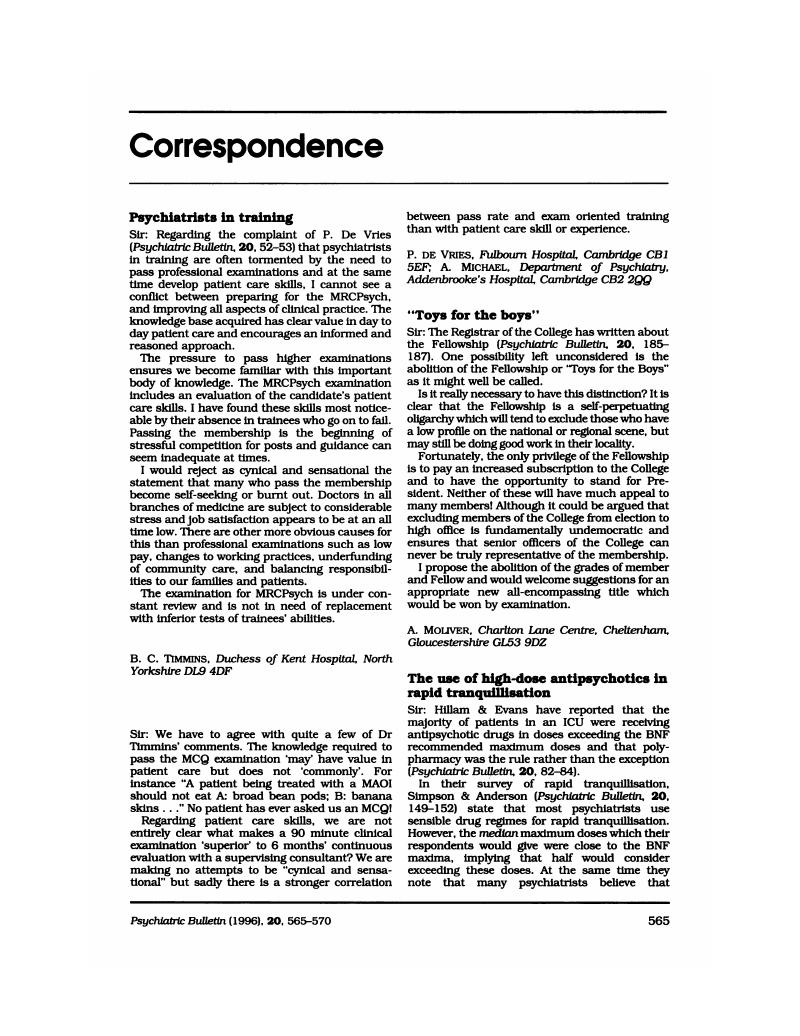No CrossRef data available.
Article contents
The use of high-dose antipsychotics in rapid tranquillisation
Published online by Cambridge University Press: 02 January 2018
Abstract
An abstract is not available for this content so a preview has been provided. As you have access to this content, a full PDF is available via the ‘Save PDF’ action button.

- Type
- Correspondence
- Information
- Creative Commons
- This is an Open Access article, distributed under the terms of the Creative Commons Attribution (CC-BY) license (http://creativecommons.org/licenses/by/4.0/), which permits unrestricted re-use, distribution, and reproduction in any medium, provided the original work is properly cited.
- Copyright
- Copyright © Royal College of Psychiatrists, 1996
References
Baldessarini, R. J., Cohen, B. M. & Teicher, M. H. (1988) Significance of neuroleptic dosage and plasma level in the pharmacological treatment of psychoses. Archives of General Psychiatry, 45, 79–91.CrossRefGoogle ScholarPubMed
Cornwall, P. L., Hassanyeh, F. & Horn, C. (1996) High-dose antipsychotic medication: improving clinical practice in a psychiatric special (intensive) care unit. Psychiatric Bulletin, in press.Google Scholar
Farde, L., Nordstrom, A. L., Wiesel, F. A., et al (1992) Positron emission tomographic analysis of central D1 and D2 dopamine receptor occupancy in patients treated with classical neuroleptics and clozapine. Relation to extrapyramidal side effects. Archives of General Psychiatry, 49, 538–544.CrossRefGoogle ScholarPubMed





eLetters
No eLetters have been published for this article.